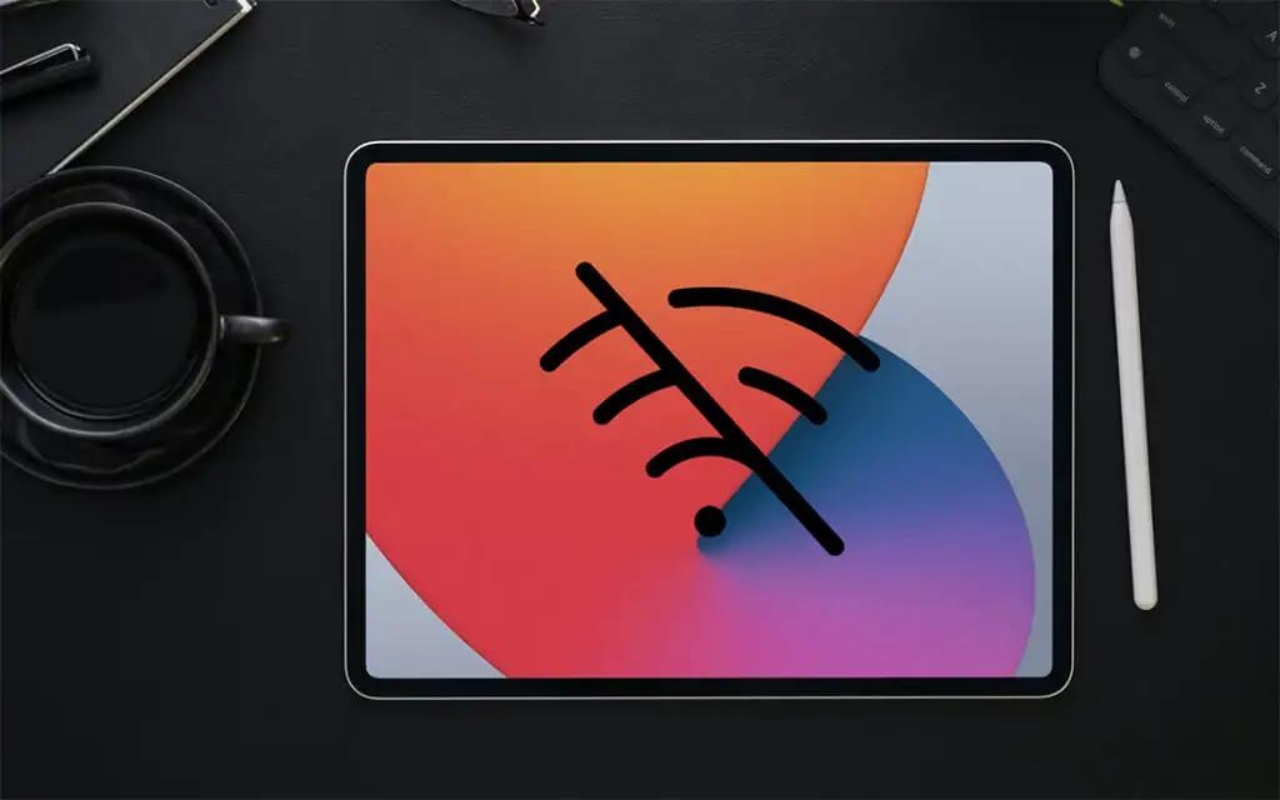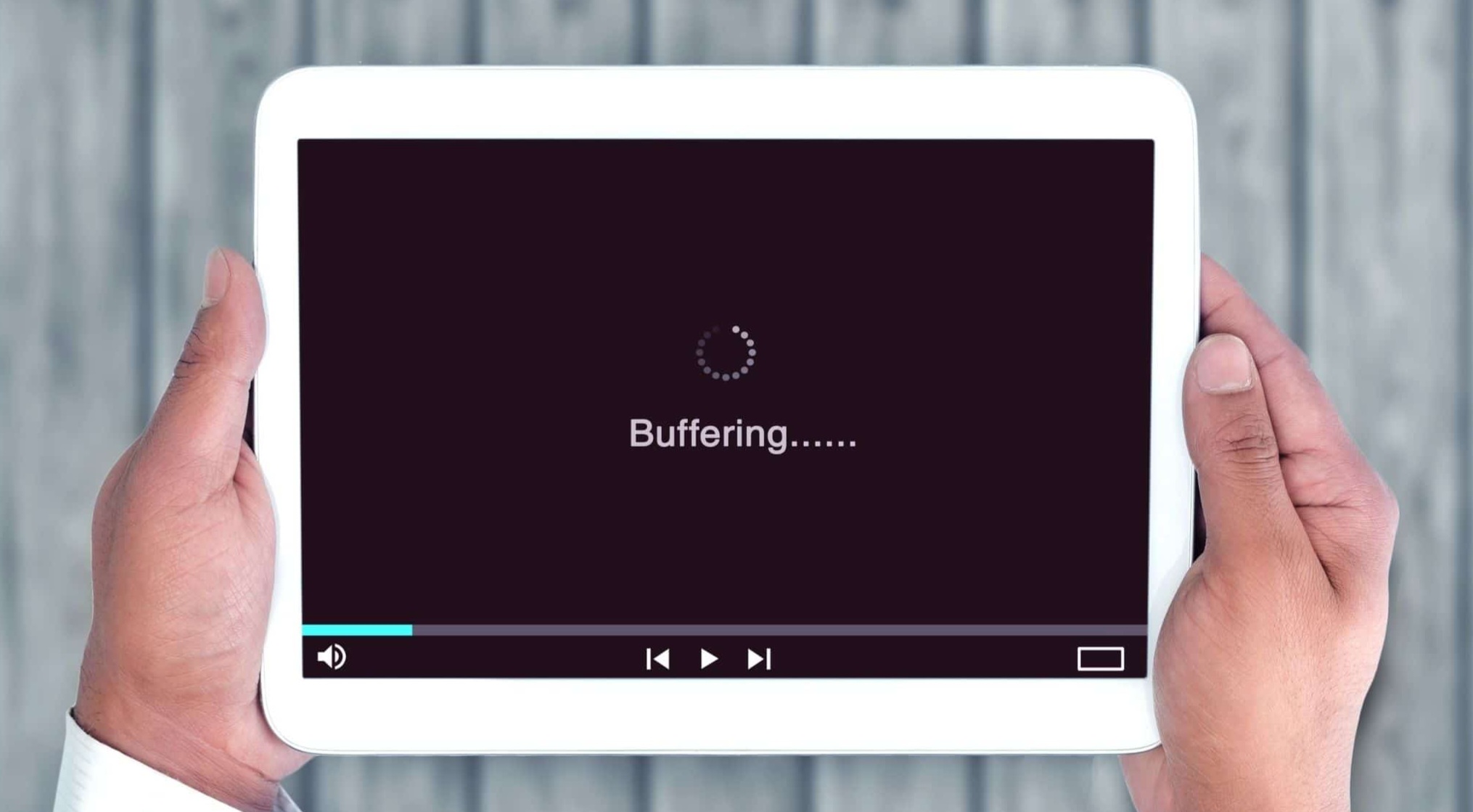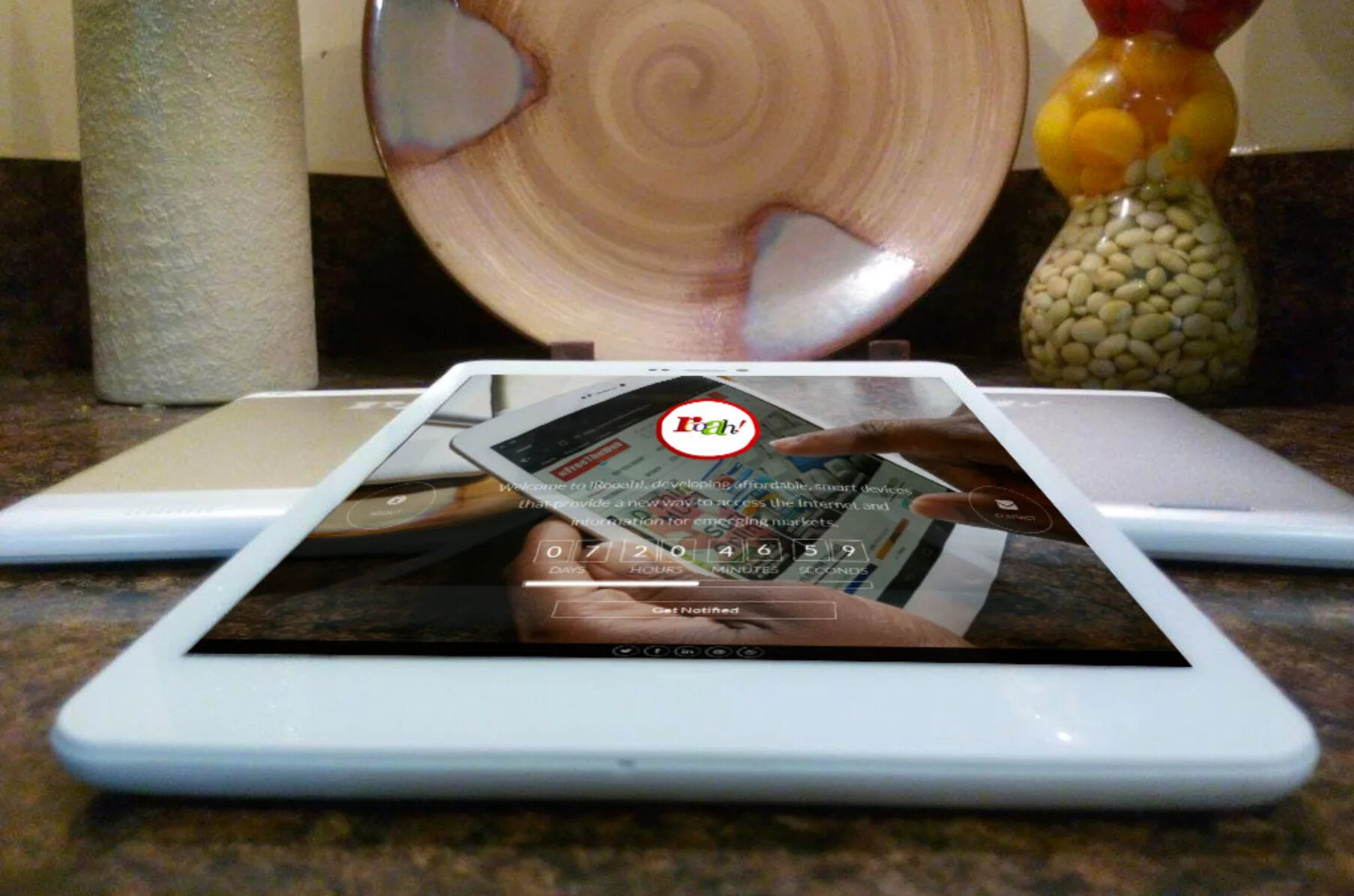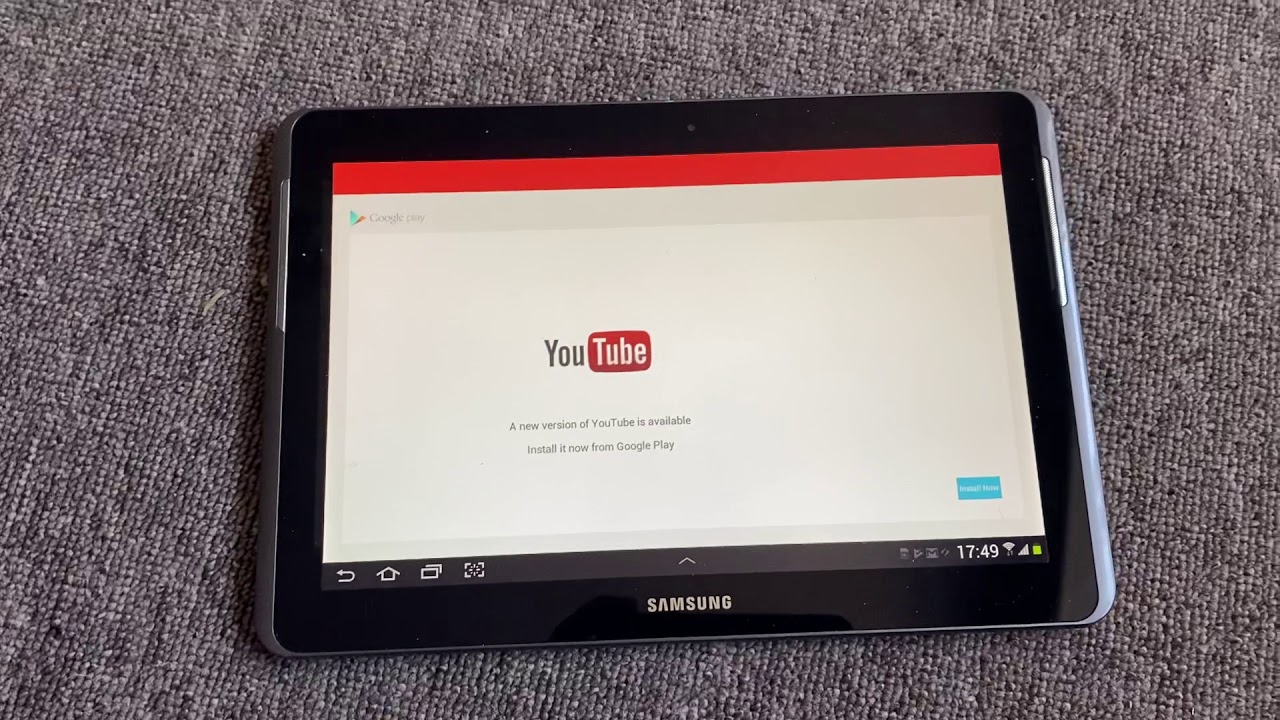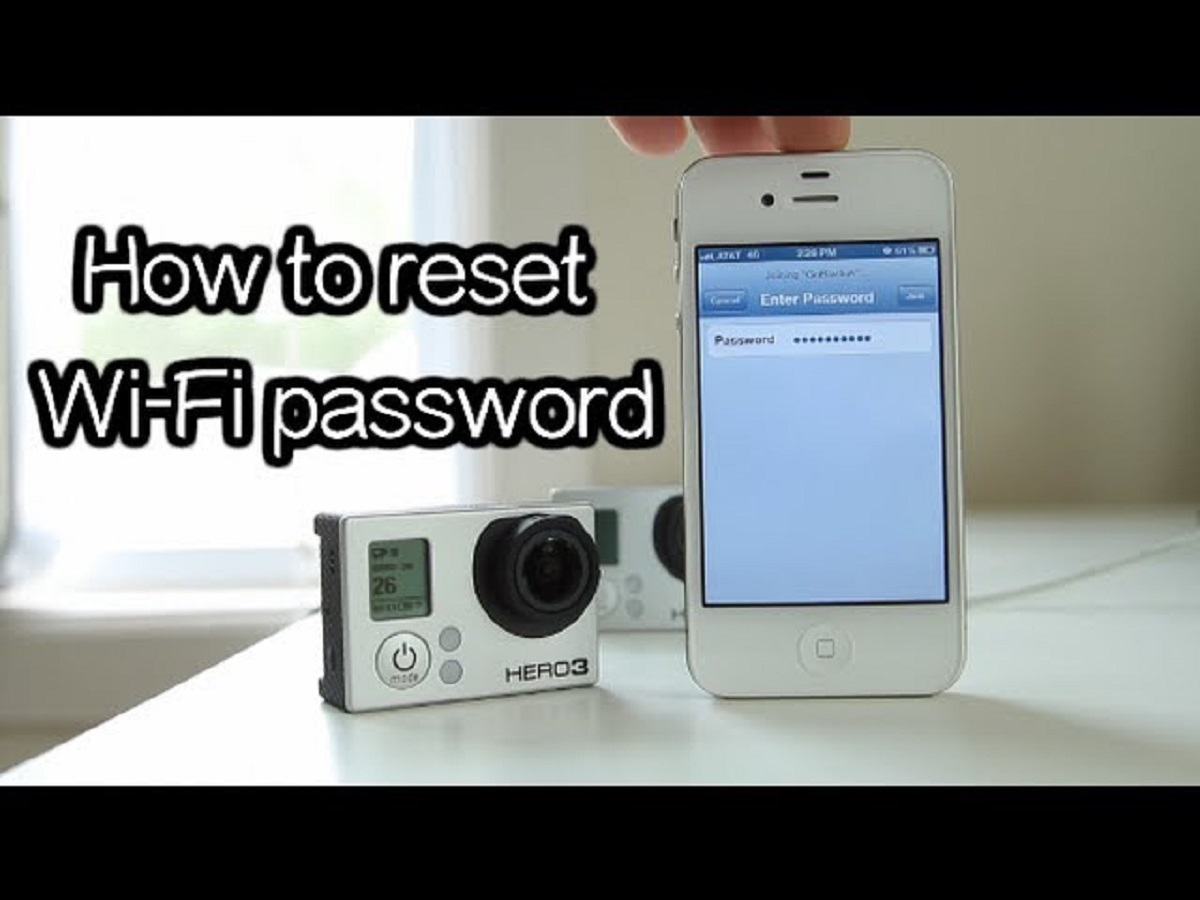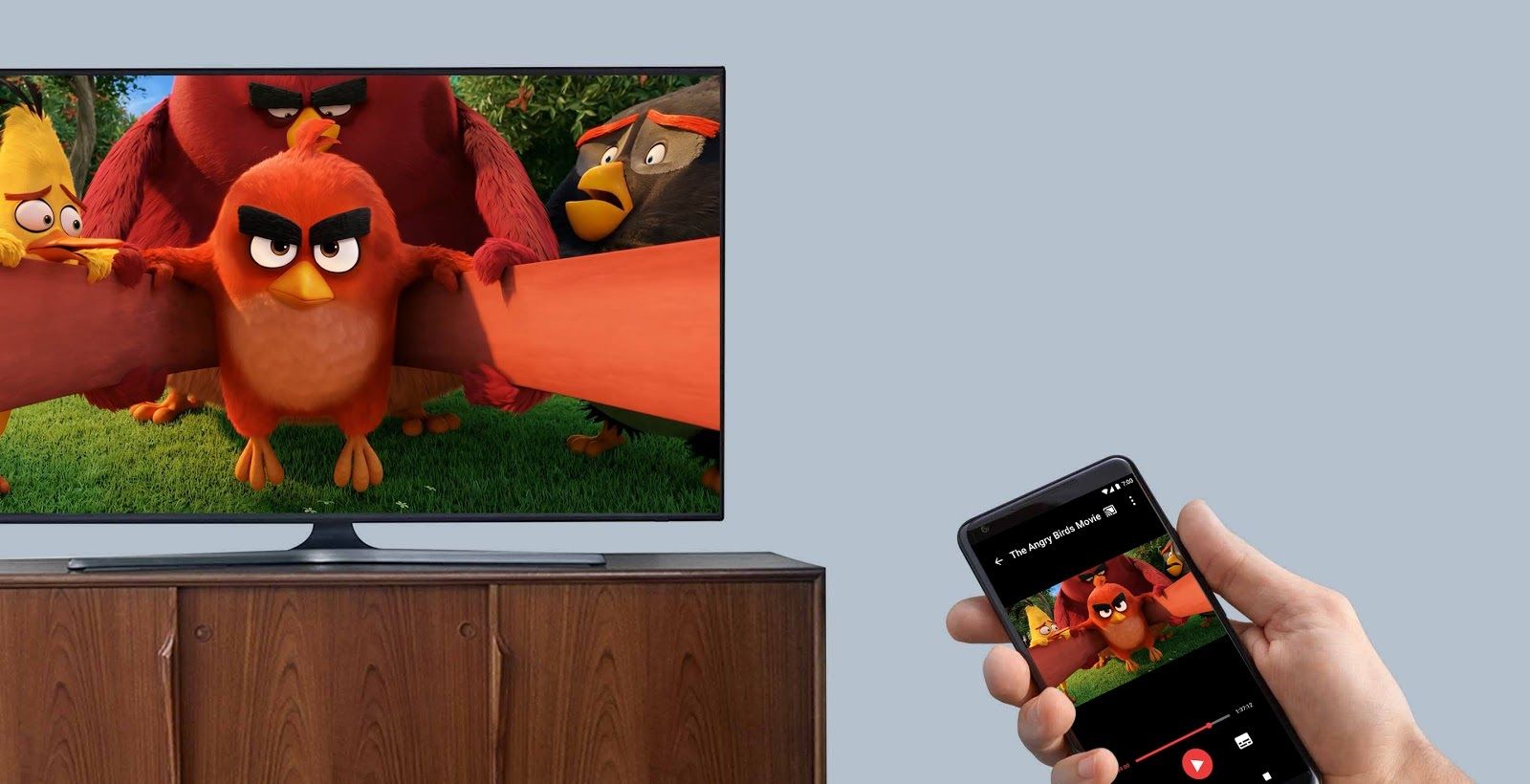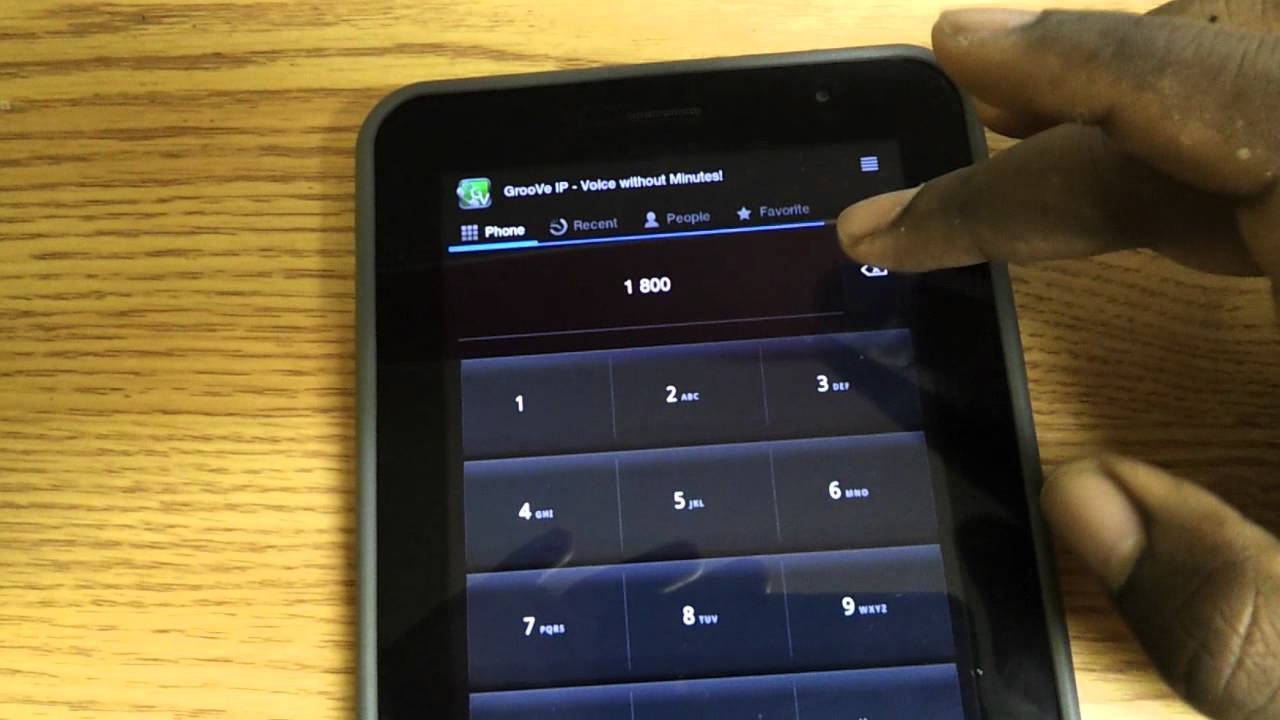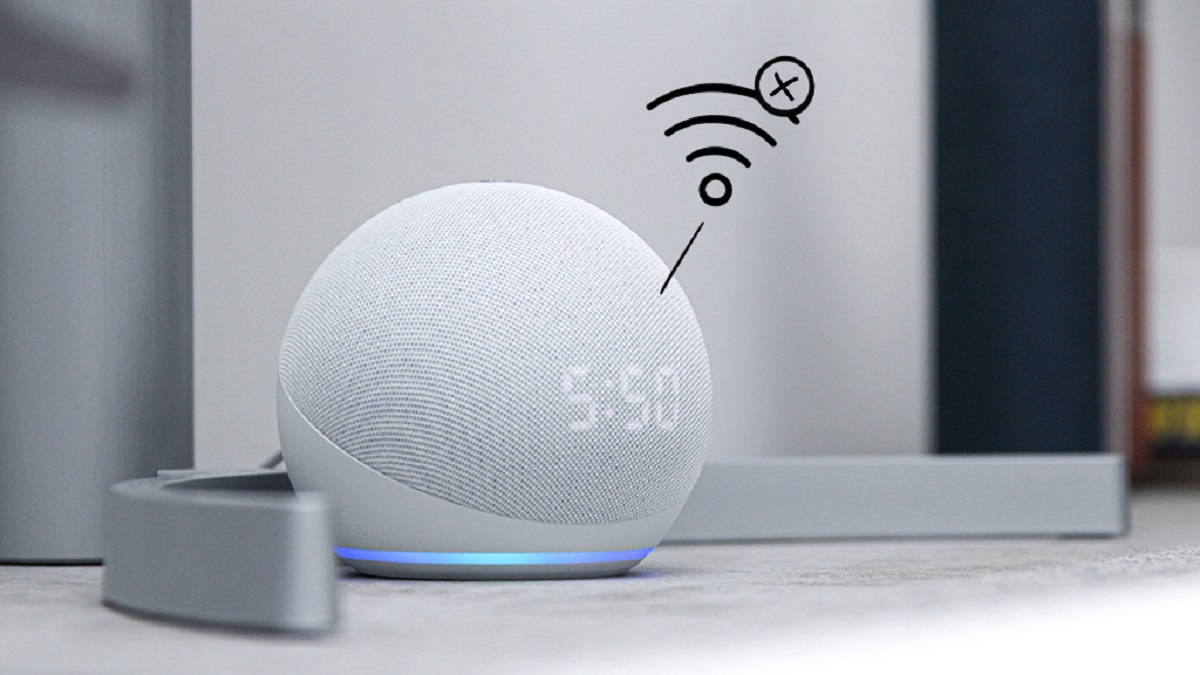Introduction
Connecting your tablet to Wi-Fi is essential for accessing the internet, downloading apps, streaming media, and staying connected with friends and family. However, it can be frustrating when your tablet fails to connect to a Wi-Fi network. You may find yourself wondering why your tablet is not connecting to Wi-Fi and how you can resolve this issue.
In this article, we will explore some common Wi-Fi connection problems that can prevent your tablet from connecting to a network. We will also provide troubleshooting steps to help you resolve these issues and get your tablet back online.
Before we dive into the specific problems and solutions, it’s important to understand that Wi-Fi connectivity issues can occur due to various reasons, such as incorrect settings, network limitations, or hardware problems. By diagnosing and addressing these issues, you can regain seamless Wi-Fi connectivity on your tablet.
If you’re ready to solve the mystery of why your tablet is not connecting to Wi-Fi, let’s begin troubleshooting together!
Common Wi-Fi Problems
When it comes to troubleshooting Wi-Fi connection issues on your tablet, it’s helpful to familiarize yourself with some common problems that may be causing the connectivity failure. Identifying these issues will enable you to take the necessary steps to resolve them. Let’s explore some of the most common Wi-Fi problems:
- Wrong Password: One of the primary reasons why your tablet may fail to connect to a Wi-Fi network is entering an incorrect password. Double-check that you have entered the correct password for the network you’re trying to connect to.
- Limited Wi-Fi Range: Another possibility is that you are too far away from the Wi-Fi router. Wi-Fi signals have limited range, so ensure you’re within the router’s coverage area. Moving closer to the router may resolve the issue.
- Wi-Fi Network Not Visible: If you’re unable to see any available Wi-Fi networks on your tablet, it could be due to your router’s broadcast settings. Make sure the router is set to broadcast the Wi-Fi network and that it’s not hidden.
- Wi-Fi Connection Drops Frequently: If you experience intermittent disconnections, your tablet might be losing signal strength. This can be caused by obstacles or interference. Try moving closer to the router or removing any objects that could interfere with the signal.
- Outdated Router Firmware: Outdated router firmware can cause compatibility issues with your tablet’s Wi-Fi connection. Check the manufacturer’s website for any firmware updates and install them if available.
- Incorrect Wi-Fi Settings on Tablet: Ensure that your tablet’s Wi-Fi settings are correctly configured. Make sure the Wi-Fi is turned on and that you haven’t accidentally enabled airplane mode or toggled off the Wi-Fi feature.
- Interference from Other Devices: Other electronic devices such as cordless phones and microwave ovens can interfere with Wi-Fi signals. Keep your tablet away from such devices, especially when experiencing connectivity issues.
- Insufficient Wi-Fi Signal Strength: Weak Wi-Fi signals can hinder your tablet’s ability to connect to a network. Consider installing a Wi-Fi range extender or repositioning the router for better coverage.
- Software Glitches on Tablet: Sometimes, software glitches or bugs on your tablet can prevent proper Wi-Fi connectivity. Restarting your tablet or performing a software update might help resolve these issues.
- Router Compatibility Issues: In rare cases, certain routers may not be compatible with your tablet’s Wi-Fi technology. Check the router’s specifications and compare them with your tablet to ensure compatibility.
Now that we have identified some common Wi-Fi problems, let’s move on to the next section, where we will provide detailed troubleshooting steps to address each issue.
Problem 1: Wrong Password
One of the most common reasons why your tablet may not be connecting to Wi-Fi is entering the wrong password. A simple mistake in typing the password can prevent your tablet from establishing a successful connection. To resolve this issue, follow these troubleshooting steps:
- Double-Check the Password: Ensure that you have entered the correct password for the Wi-Fi network. Check for any capitalization, special characters, or numbers that may be required. It’s easy to overlook such details, so take your time to enter the password accurately.
- Re-enter the Password: If you’re still unable to connect, try re-entering the password. Sometimes, a simple mistake or an extra space can lead to authentication failure. Deleting and retyping the password can help resolve this issue.
- Reset the Wi-Fi Password: If you’re unsure of the correct password or suspect that it may have been changed without your knowledge, you can reset the Wi-Fi password from the router’s settings. Refer to the router’s user manual or contact your Internet Service Provider (ISP) for instructions on how to reset the password.
- Restart the Router: If you have confirmed that the password is correct but are still experiencing connectivity issues, try restarting the router. This can help refresh the network and resolve any temporary glitches that may be preventing your tablet from connecting.
Remember, it’s crucial to enter the correct password to establish a successful connection with the Wi-Fi network. Taking these troubleshooting steps should help you overcome the problem of a wrong password and enable your tablet to connect to Wi-Fi.
Problem 2: Limited Wi-Fi Range
If you find that your tablet is not connecting to Wi-Fi even when you are near the router, limited Wi-Fi range may be the culprit. Wi-Fi signals have a limited coverage area, and various factors can affect their range. To address this issue, consider the following troubleshooting steps:
- Move Closer to the Router: If your tablet is too far away from the router, it may struggle to establish a stable Wi-Fi connection. Try moving closer to the router and see if the connection improves. Ideally, you should be within the router’s signal range for optimal connectivity.
- Eliminate Obstacles: Physical barriers such as walls, floors, and furniture can weaken Wi-Fi signals. If possible, position yourself in a location where there are fewer obstacles between your tablet and the router. This can help improve the Wi-Fi signal strength and increase the chances of a successful connection.
- Use a Wi-Fi Range Extender: If you can’t move closer to the router or eliminate obstacles, consider using a Wi-Fi range extender. A range extender amplifies the Wi-Fi signal and extends the coverage area. Place the range extender strategically between your tablet and the router to boost the Wi-Fi signal and enhance connectivity.
- Optimize Router Placement: The placement of the router can significantly impact Wi-Fi signal strength and range. Ensure that the router is positioned in a central location within your home or office. Placing it on a higher shelf or away from walls can improve signal distribution and coverage, making it easier for your tablet to connect to the Wi-Fi network.
By following these troubleshooting steps, you can overcome the problem of limited Wi-Fi range and improve the connectivity of your tablet to the Wi-Fi network. Experiment with different positions and configurations to find the optimal setup that ensures a strong and reliable connection.
Problem 3: Wi-Fi Network Not Visible
If you’re unable to see any available Wi-Fi networks on your tablet, it can be frustrating and puzzling. There are several possible reasons why a Wi-Fi network may not be visible. To troubleshoot and resolve this issue, consider the following steps:
- Check Router Configuration: Ensure that the Wi-Fi network you’re trying to connect to is visible and not hidden. Sometimes, router settings may be configured to hide the network name (SSID). Access your router’s settings through a web browser and verify that the network broadcast is enabled.
- Restart the Router: Restarting the router can resolve temporary glitches and refresh the network signal. Power off the router, wait for a few seconds, and then power it back on. Once the router reboots, check if the Wi-Fi network becomes visible on your tablet.
- Move Closer to the Router: If you’re far away from the router, the Wi-Fi signal strength may be too weak for your tablet to detect the network. Move closer to the router and check if the network appears in the available Wi-Fi networks list.
- Reset Network Settings on Tablet: On your tablet, try resetting the network settings to their default values. This can resolve any misconfigurations or conflicts that may be preventing the Wi-Fi network from appearing. Keep in mind that resetting network settings will remove saved Wi-Fi passwords, so you’ll need to re-enter them after the reset.
- Update Router Firmware: Outdated router firmware can cause compatibility issues and prevent the network from being visible. Check the manufacturer’s website for any available firmware updates for your specific router model. Follow the instructions provided to update the firmware and check if the Wi-Fi network becomes visible.
- Check for Interference: Other electronic devices or neighboring Wi-Fi networks can interfere with the Wi-Fi signals, preventing the network from being visible. Move away from other electronic devices and try changing the Wi-Fi channel on your router to a less congested one, if possible.
By following these troubleshooting steps, you can overcome the problem of a Wi-Fi network not being visible on your tablet. Remember to check router settings, restart the router, and optimize your tablet’s network settings to improve the chances of detecting and connecting to the Wi-Fi network successfully.
Problem 4: Wi-Fi Connection Drops Frequently
If your tablet’s Wi-Fi connection frequently drops or becomes unstable, it can disrupt your online activities. Several factors can contribute to this issue, but there are steps you can take to troubleshoot and improve the stability of your Wi-Fi connection. Consider the following solutions:
- Check Signal Strength: Weak Wi-Fi signal can lead to connection drops. Make sure your tablet is within a reasonable range of the Wi-Fi router. If you’re far away, move closer to the router to strengthen the signal and minimize interference.
- Remove Signal Interference: Electronic devices such as cordless phones, microwaves, and baby monitors can interfere with Wi-Fi signals, causing connection drops. Keep your tablet away from such devices and ensure there are no obstacles between the router and your tablet.
- Restart Router and Tablet: Sometimes, a simple reboot can resolve temporary glitches that cause frequent connection drops. Restart both your router and tablet and monitor if the connection stability improves.
- Update Router Firmware: Outdated router firmware can lead to compatibility issues and affect the stability of your Wi-Fi connection. Check the router manufacturer’s website for any available firmware updates and follow the instructions to update your router’s firmware.
- Update Tablet Software: Software glitches on your tablet may contribute to Wi-Fi connection drops. Keep your tablet’s operating system up to date by installing the latest software updates. These updates often include bug fixes and performance improvements that can enhance Wi-Fi connectivity.
- Reset Network Settings: Resetting the network settings on your tablet can fix any misconfigurations and restore stable Wi-Fi connectivity. Note that this action will remove saved Wi-Fi networks, so you’ll need to reconnect to them afterward.
- Contact Your Internet Service Provider (ISP): If the connection drops persist, it’s possible that the issue lies with your internet service. Contact your ISP to check for any known network outages or to troubleshoot any issues with your connection.
By following these troubleshooting steps, you can address the problem of frequent Wi-Fi connection drops on your tablet. Keep in mind that the solution may vary depending on the specific cause of the issue. Experiment with different solutions to find the one that works best for you and provides a stable and reliable Wi-Fi connection.
Problem 5: Outdated Router Firmware
If your tablet is having trouble connecting to Wi-Fi, one possible cause could be outdated firmware on your router. Firmware is the software that runs on the router and controls its functionality. Outdated firmware can lead to compatibility issues with your tablet, resulting in connection problems. To address this issue, take the following steps:
- Check for Firmware Updates: Visit the website of your router’s manufacturer and navigate to the support or downloads section. Look for firmware updates specific to your router model. Download the latest firmware version available.
- Read the Firmware Update Instructions: Once you have the firmware update file, carefully read the accompanying instructions provided by the manufacturer. Different routers may have slightly different update processes, so it’s important to follow the instructions specific to your device.
- Perform the Firmware Update: Connect your tablet to the router either through an Ethernet cable or a Wi-Fi connection. Open a web browser and enter your router’s IP address to access the router’s administrative settings. Navigate to the firmware update section and follow the instructions to install the new firmware.
- Wait for the Update to Complete: During the firmware update process, it’s essential to avoid interrupting the router’s power supply or disconnecting the tablet. Let the update complete without any interruptions. This may take a few minutes, so be patient.
- Restart the Router: After the firmware update is complete, it’s advisable to restart the router. Power it off, wait for a few seconds, and then power it back on. This helps ensure that the new firmware is properly implemented.
By updating your router’s firmware, you can address any compatibility issues that may be preventing your tablet from connecting to Wi-Fi. It’s recommended to periodically check for firmware updates and keep your router up to date to ensure optimal performance and compatibility with your devices.
Problem 6: Incorrect Wi-Fi Settings on Tablet
If your tablet is unable to connect to Wi-Fi, it’s possible that there are incorrect Wi-Fi settings configured on your device. Misconfigured settings can prevent your tablet from establishing a successful Wi-Fi connection. To resolve this issue, follow these troubleshooting steps:
- Check Wi-Fi Connection: Ensure that Wi-Fi is turned on and that your tablet is trying to connect to the correct Wi-Fi network. Sometimes, users accidentally disable Wi-Fi or attempt to connect to a different network without realizing it.
- Verify the Network Password: Double-check the Wi-Fi password you entered on your tablet. Make sure you have entered the correct password for the Wi-Fi network you are trying to connect to. Passwords are case-sensitive, so check for any capitalization or special characters.
- Toggle Airplane Mode: Enable Airplane Mode on your tablet for a few seconds and then disable it. This action can refresh the Wi-Fi connection and resolve any temporary software glitches that may be affecting the connectivity.
- Forget and Reconnect to the Wi-Fi Network: On your tablet, navigate to the Wi-Fi settings and forget the Wi-Fi network you’re having trouble with. Once forgotten, reconnect to the network by selecting it from the available networks list and entering the password again.
- Reset Network Settings: If the Wi-Fi settings on your tablet are extensively misconfigured or causing persistent issues, you can consider resetting the network settings to their default values. Keep in mind that this will remove saved Wi-Fi networks, so you’ll need to reconnect to them.
- Update the Operating System: Outdated operating systems can sometimes cause Wi-Fi connectivity problems. Check for any available system updates and install them on your tablet. These updates often include bug fixes and improvements that can resolve Wi-Fi-related issues.
- Restart Your Tablet: Restarting your tablet can often resolve minor software glitches that may be affecting Wi-Fi connectivity. Power off your tablet, wait for a few seconds, and then power it back on. After the restart, check if you can connect to Wi-Fi.
By following these troubleshooting steps, you can address incorrect Wi-Fi settings on your tablet and reestablish a stable connection to the desired Wi-Fi network. Take the time to verify your settings and make any necessary adjustments to ensure proper connectivity.
Problem 7: Interference from Other Devices
If your tablet is experiencing Wi-Fi connectivity issues, it’s possible that other electronic devices in your vicinity are causing interference. Interference can disrupt the Wi-Fi signal and prevent your tablet from connecting or maintaining a stable connection. To address this issue, consider the following troubleshooting steps:
- Identify Interfering Devices: Look for electronic devices that may be causing interference, such as cordless phones, microwave ovens, baby monitors, or Bluetooth devices. These devices operate on similar frequency bands as Wi-Fi and can disrupt the signal.
- Move Away from Interfering Devices: If possible, move your tablet away from the interfering devices. Increasing the physical distance between your tablet and the source of interference can help minimize the impact on the Wi-Fi signal and improve connectivity.
- Change Wi-Fi Channel: Wi-Fi routers typically broadcast signals on specific channels. If you’re experiencing interference from nearby Wi-Fi networks, changing the Wi-Fi channel on your router can help reduce interference. Access your router’s settings and select a different channel to improve your tablet’s connection.
- Use a Different Wi-Fi Band: If your router supports both 2.4 GHz and 5 GHz bands, try connecting your tablet to the less crowded 5 GHz band. This can help reduce interference from other devices that mainly operate on the more common 2.4 GHz band.
- Upgrade to a Dual-Band or Mesh Router: If interference continues to be a problem, consider upgrading to a dual-band or mesh router setup. Dual-band routers allow you to connect devices on different frequency bands simultaneously, reducing interference. Mesh routers use multiple access points to ensure strong Wi-Fi coverage throughout your space.
- Reposition Your Router: Try repositioning your router to a central location within your home or office. This can help evenly distribute the Wi-Fi signal and minimize the impact of interference from other devices. Experiment with different router placements to optimize signal strength and reduce interference.
By identifying and mitigating interference from other devices, you can enhance the stability and performance of your tablet’s Wi-Fi connection. Keep in mind that some interference sources may be beyond your control, such as neighboring networks or environmental factors. However, following these troubleshooting steps can significantly improve your tablet’s ability to connect and stay connected to Wi-Fi.
Problem 8: Insufficient Wi-Fi Signal Strength
If you are struggling with a weak Wi-Fi signal on your tablet, it can lead to connection issues and slow internet speeds. Several factors can contribute to an insufficient Wi-Fi signal, but there are steps you can take to address this problem. Consider the following troubleshooting steps:
- Check Router Placement: The placement of your router plays a crucial role in the strength of the Wi-Fi signal. Ensure that the router is positioned in a central location within your home or office. Avoid placing it near walls, metal objects, or other electronic devices that can interfere with the signal.
- Reduce Interference: Other electronic devices and nearby Wi-Fi networks can interfere with your Wi-Fi signal. Keep your tablet away from such devices and try changing the Wi-Fi channel on your router to avoid interference from neighboring networks. Additionally, consider using devices that operate on different frequency bands, such as cordless phones or Bluetooth devices.
- Use a Wi-Fi Range Extender: If you have areas in your home or office where the Wi-Fi signal is weak or non-existent, consider using a Wi-Fi range extender. A range extender amplifies the existing Wi-Fi signal, extending its coverage area. Place the range extender in a location that maximizes signal strength for your tablet.
- Upgrade Your Router: Older routers may not provide sufficient signal strength and coverage for your tablet. Consider upgrading to a newer router model that offers better performance and improved Wi-Fi signal power. Look for routers with multiple antennas, beamforming technology, or mesh network capabilities for enhanced coverage.
- Adjust Router Antennas: If your router has adjustable antennas, experiment with their positions. Try positioning them vertically or horizontally to find the optimal configuration that boosts the signal strength for your tablet.
- Remove Obstacles: Physical barriers, such as walls and furniture, can weaken the Wi-Fi signal. Try to minimize the number of obstacles between your router and your tablet to improve signal strength. Position your router and tablet in a line of sight, removing any potential obstructions.
By following these troubleshooting steps, you can address the problem of insufficient Wi-Fi signal strength on your tablet. Experiment with different solutions and configurations to find the best combination that provides a stronger and more reliable Wi-Fi signal for improved connectivity.
Problem 9: Software Glitches on Tablet
Software glitches on your tablet can cause disruptions in Wi-Fi connectivity. These glitches can result from various factors, such as outdated software, conflicting apps, or system errors. If you are experiencing Wi-Fi connection issues due to software glitches, consider the following troubleshooting steps:
- Restart Your Tablet: A simple restart can often resolve minor software glitches. Power off your tablet, wait for a few seconds, and then power it back on. This action clears the system’s memory and refreshes the software, potentially resolving any temporary glitches affecting Wi-Fi connectivity.
- Update Your Tablet’s Operating System: Outdated operating systems can sometimes have bugs and compatibility issues that impact Wi-Fi connectivity. Check for any available system updates and install them on your tablet. Updating the software can bring bug fixes, security patches, and improvements that may address Wi-Fi-related issues.
- Disable and Re-enable Wi-Fi: Turning off Wi-Fi and then enabling it again can help refresh the Wi-Fi connection and resolve temporary glitches. Go to the Wi-Fi settings on your tablet, toggle off the Wi-Fi option, wait for a few seconds, and then toggle it back on.
- Forget and Reconnect to Wi-Fi Network: If you are experiencing consistent connectivity issues with a particular Wi-Fi network, you can try forgetting the network and reconnecting to it. Go to the Wi-Fi settings, find the network in question, and tap on “Forget” or “Remove.” Then, reconnect to the network by selecting it from the available networks list and entering the password.
- Clear App Cache and Data: Certain apps on your tablet can affect Wi-Fi connectivity. Clearing the cache and data of specific apps or all apps can help resolve conflicts that may be interfering with the Wi-Fi connection. Go to the App Settings on your tablet, select the desired app, and choose the “Clear Cache” and “Clear Data” options.
- Factory Reset: As a last resort, you can consider performing a factory reset on your tablet. This action erases all data and settings on your device, returning it to its original state. Before proceeding, make sure to back up your important data. Go to the tablet’s settings, navigate to the “System” or “About” section, and choose the “Factory Reset” option.
By following these troubleshooting steps, you can address software glitches that may be impacting the Wi-Fi connectivity on your tablet. Start with the simplest solutions and gradually move towards more extensive actions, such as a factory reset, if necessary. Remember to back up your data before performing a factory reset.
Problem 10: Router Compatibility Issues
While Wi-Fi connectivity issues on your tablet are often attributed to the tablet itself, sometimes the problem lies with the router. Incompatibility between your tablet and the router can result in connection problems. To address router compatibility issues, consider the following troubleshooting steps:
- Check Router Specifications: Review the specifications of your router and compare them with your tablet’s Wi-Fi capabilities. Ensure that your tablet supports the same Wi-Fi standards (such as 802.11ac, 802.11n) as the router. If the router uses an older standard that is not supported by your tablet, you may experience compatibility issues.
- Update Router Firmware: Outdated router firmware can contribute to compatibility issues. Visit the manufacturer’s website and check if there are any firmware updates available. Updating the router firmware can improve its performance, resolve compatibility problems, and add support for newer Wi-Fi standards.
- Restart the Router: Sometimes, a simple restart of the router can resolve compatibility issues temporarily. Power off the router, wait for a few seconds, and then power it back on. After the restart, check if your tablet can establish a Wi-Fi connection.
- Use a Different Wi-Fi Band: Some routers offer both 2.4 GHz and 5 GHz frequency bands. If your tablet has compatibility issues with one band, try connecting to the other. Switching to a different Wi-Fi band can mitigate compatibility problems and provide a more stable connection.
- Try a Different Router: In some cases, compatibility issues may be persistent, and resolving them may require a different router. If possible, borrow a router from a friend or family member or consider investing in a new router that has good compatibility with your tablet and supports the necessary Wi-Fi standards.
- Contact Router Manufacturer or ISP: If none of the above solutions work, it may be worth reaching out to the router manufacturer’s customer support or your Internet Service Provider (ISP). They may be able to provide further guidance or troubleshoot the compatibility issue.
By following these troubleshooting steps, you can address compatibility issues between your tablet and the router. It’s important to ensure that both devices are compatible and configured correctly to establish a successful Wi-Fi connection. Consider trying different solutions until you find the one that resolves the compatibility problem and allows your tablet to connect smoothly.
Conclusion
When your tablet is not connecting to Wi-Fi, it can be frustrating and hinder your ability to access the internet and enjoy online activities. However, by troubleshooting common Wi-Fi problems, you can regain seamless connectivity and enhance your tablet experience.
In this article, we explored various Wi-Fi issues that can prevent your tablet from connecting to a Wi-Fi network. We discussed problems such as wrong passwords, limited Wi-Fi range, invisible networks, frequent connection drops, outdated router firmware, incorrect Wi-Fi settings on your tablet, interference from other devices, insufficient Wi-Fi signal strength, software glitches, and router compatibility issues.
For each problem, we provided troubleshooting steps to help you resolve the issue. By double-checking passwords, ensuring optimal Wi-Fi range, adjusting settings, updating firmware and software, considering interference factors, and addressing compatibility concerns, you can overcome these common problems and reconnect your tablet to Wi-Fi successfully.
Remember, the specific solution may vary depending on the nature of the problem, and it may require some trial and error to find the most effective resolution. Additionally, as technology continues to evolve, new problems and solutions may arise. Staying informed about the latest updates, firmware patches, and best practices can help you maintain a reliable Wi-Fi connection on your tablet.
We hope that this article has helped you understand why your tablet may not be connecting to Wi-Fi and provided you with practical solutions to resolve the issue. By following the troubleshooting steps outlined, you can overcome Wi-Fi connectivity problems and enjoy uninterrupted internet access on your tablet.







